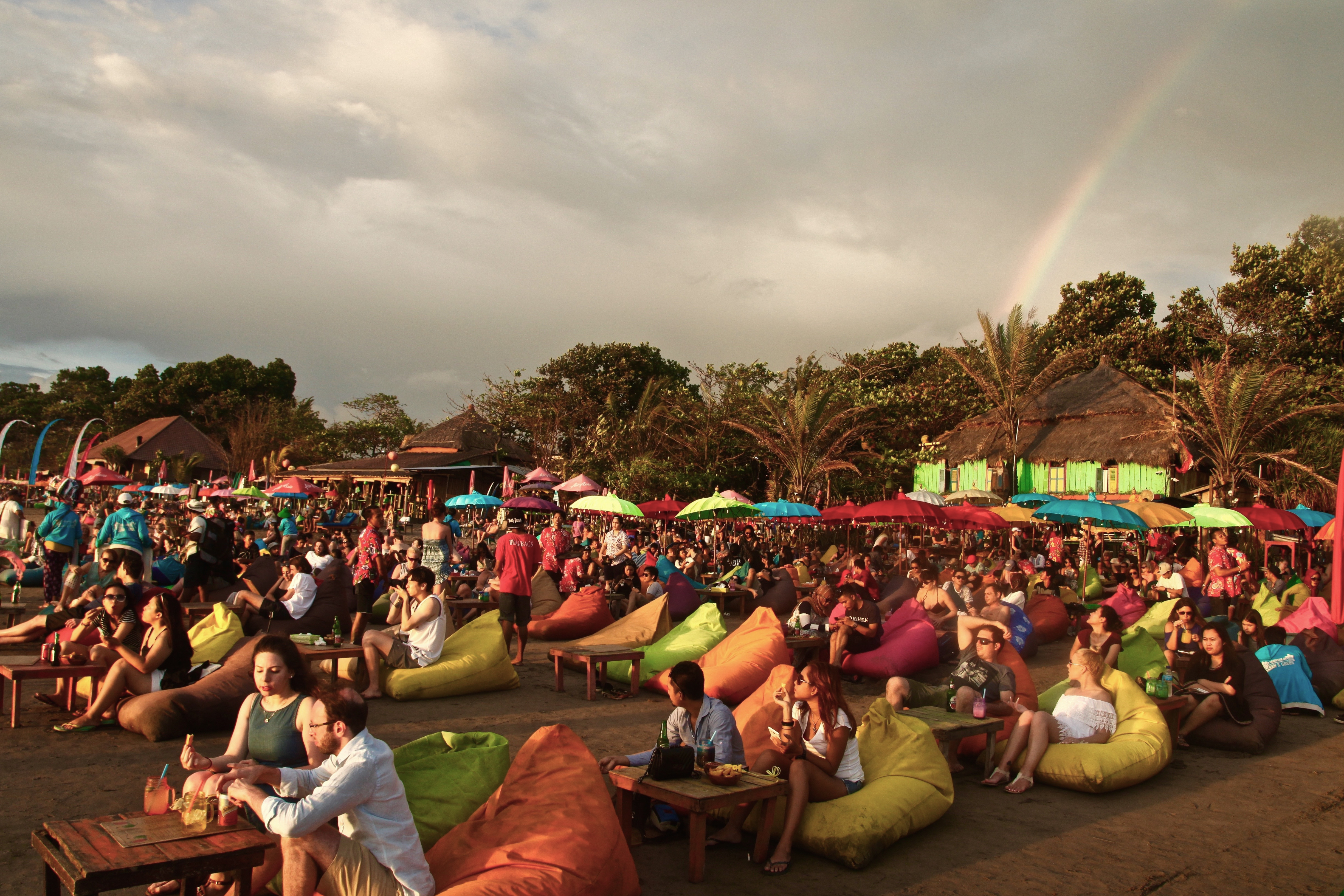
Bali, Indonesia – At the height of the pandemic, Maria, a refugee from the Philippines, paid 2.8 million rupiahs ($180) every month to rent a hotel room in Indonesia’s Bali.
But when international tourists began returning to the popular resort island en masse earlier this year, Maria’s hotel in Canggu, a coastal village popular with surfers and night revellers, hiked its prices five-fold.
“One day they raised it to 400,000 rupiahs per day without any warning,” Maria, who requested to be referred to by a pseudonym, told Al Jazeera.
“Now I’m staying in a tiny room near [the provincial capital] Denpasar with no air conditioning. It’s all I can afford.”
As Bali rebounds from COVID-19, the cost of accommodation on the island is soaring in a sobering reality check for renters, many of them foreigners who sought shelter in Bali during the pandemic.

When Indonesia closed its borders in April 2020, reducing daily visitors from more than 44,000 to practically zero, many hotels pivoted to the long-term rental market to survive.
Hoteliers rolled out huge discounts to attract some of the tens of thousands of foreigners on the island. Faced with increased competition, the island’s 4,000 holiday villas dropped asking prices by 50-75 percent to secure tenants. With no way of knowing when or if tourists would return, hundreds of hotels ceased trading and were listed for sale.
But with international travel roaring back to life, Bali has become a landlord’s market practically overnight.
“I was paying 10 million rupiahs ($641) a month, then one day the owner told me she was raising the price to 40 million rupiahs ($2,565),” Gina Marks, an American expat, told Al Jazeera.
For most of the pandemic, Marks lived in a small two-bedroom villa in Seminyak, a beachfront district south of Canggu.
“I understand it had to go up,” she said. “But by increasing it that much, I felt betrayed because I kept food on her [the landlord’s] table during the pandemic.”
The post-pandemic price correction has not been limited to short-term accommodation. Land and dwelling values in the most popular parts of the island are also appreciating fast.
“In Canggu, I would say property has gone up 20 to 30 percent this year,” Mark Ching, director of the Tamora Group, a developer of villa projects and apartments, told Al Jazeera.
“There are two reasons behind it. The first is foreigners can travel here freely again and that has created a lot of confidence for Indonesian investors who saw how quiet things were during the pandemic and how busy the streets are now. There’s a mad rush to be among the first to take advantage of it.”
The second reason, according to Ching, is the Omnibus Law — legislation introduced in November 2020 that allows foreigners to buy apartments and land while granting them permanent ownership and resale rights.
“It was one of the reasons we started our latest project but because of COVID, there were few foreign buyers,” Ching said, referring to the The Tamora apartment complex in Canggu.
“However, lately the majority of sales have been to foreigners taking advantage of the Omnibus Law.”
‘Going crazy’
In Cemagi, an upcoming tourist district of lush green rice fields located a half-hour drive from Canggu, property prices are rising even faster. In 2019, the going rate for leased land — the most common ownership vehicle available for foreigners building stand-alone villas in Bali — was 8 million rupiahs ($513) per 100 square metres per year.
During the pandemic, prices fell to 6 million rupiahs ($385). Today the same land is being advertised for 12 million rupiahs ($770), and villa projects are popping up like mushrooms.
“For two years during the pandemic nearly nothing was built but now it’s going crazy and there’s no way anyone can stop it,” Markus Cristoph, the German owner of Udara, a yoga retreat in Seseh, told Al Jazeera.
Although tourists are returning to Bali, visitor numbers remain well below pre-pandemic levels.
Bali saw about 276,650 arrivals in August – up 12 percent compared to July but less than half of the number reported during the same month in 2019.
Still, local observers say visitors have been highly concentrated in a handful of hotspots on the island.
Rents have jumped so high “because 100 percent… want to stay in Canggu,” said Ching of the Tamora Group.

Coupled with Bali’s small winding roads, the sudden population spike has resulted in chronic traffic congestion in the area.
The problem is especially pronounced in Berawa, the most popular beach and thoroughfare in Canggu and home of the new Atlas Beach Fest, the largest beach club in Southeast Asia with a capacity of 10,000 visitors per day.
Next door, Finns Beach Club welcomes up to 8,000 people each day.
“I live in Berawa. Every day I am finding it harder to commute,” Ching said. “I’m going to have to move.”
Internal migration by expats and wealthy Indonesians is causing property values in other desirable parts of Bali to rise, too, said Manuele Mossoni, director of architectural firm 2M Design Lab.
“I think very soon there will be total saturation of the market in Canggu because they can’t host so many people in the same place,” Mossoni told Al Jazeera. “Investors are discovering different places like Uluwatu in the south. Balian [an hour’s drive west of Canggu] is another good example where investors have snapped up land and are waiting for the right moment to build.”
Mossoni, who had to double his workforce to 30 staff members and move to larger premises this year to keep up with demand, believes property prices in Bali still have much higher to climb.
“During the next five years, I think prices will increase even faster than now because there are so many people from Europe and America who realise after the bad period of the pandemic, Bali is a pretty good place to stay.”







